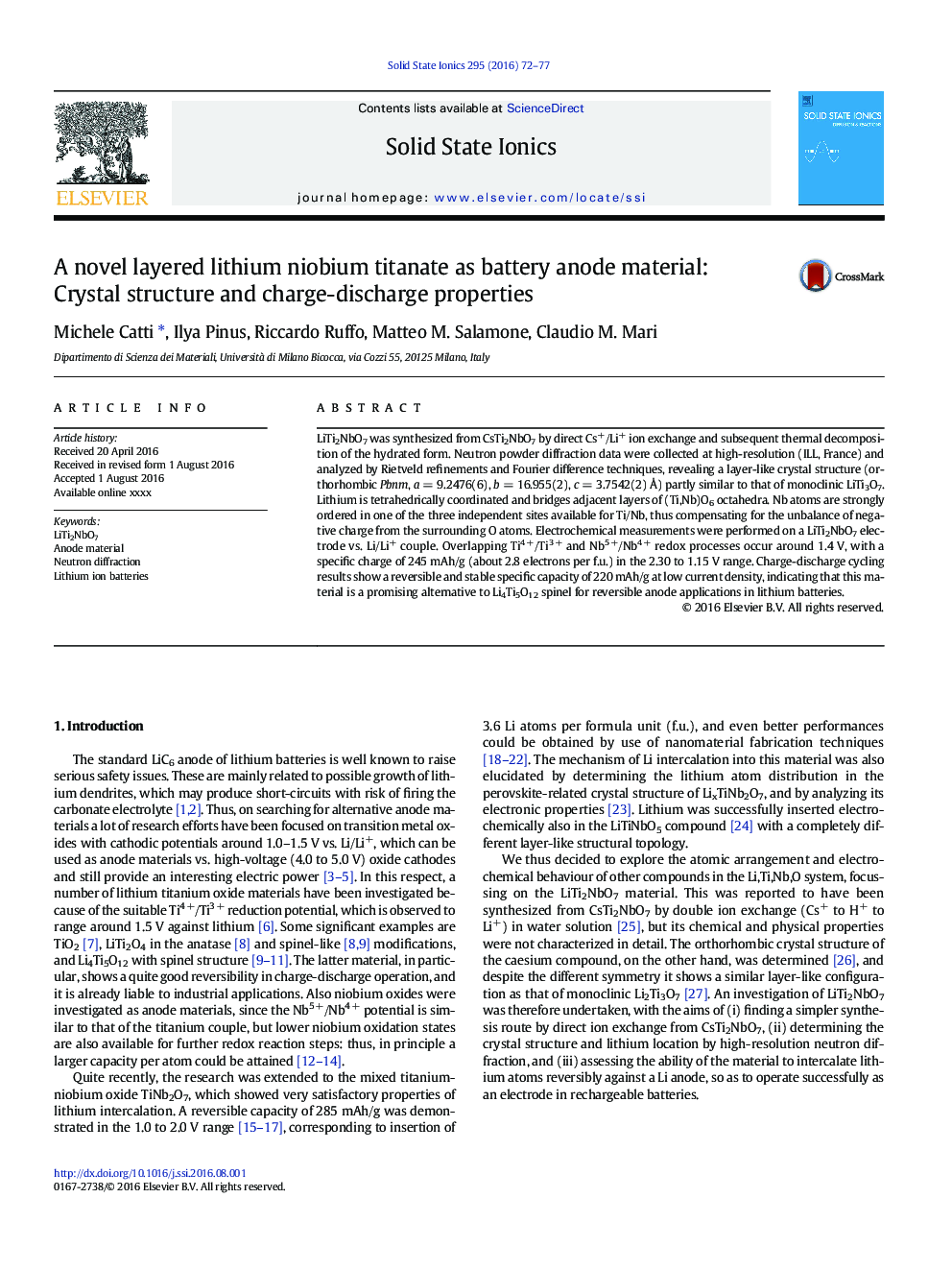| Article ID | Journal | Published Year | Pages | File Type |
|---|---|---|---|---|
| 1296009 | Solid State Ionics | 2016 | 6 Pages |
•LiTi2NbO7 works reversibly as negative electrode material vs. Li/Li+ at about 1.4 V.•A stable specific capacity of 220 mAh/g is delivered at low current density.•Li atoms are in bridging positions between layers of (Ti,Nb)O6 octahedra.•LiO bonding features account for the good electrode reversibility.
LiTi2NbO7 was synthesized from CsTi2NbO7 by direct Cs+/Li+ ion exchange and subsequent thermal decomposition of the hydrated form. Neutron powder diffraction data were collected at high-resolution (ILL, France) and analyzed by Rietveld refinements and Fourier difference techniques, revealing a layer-like crystal structure (orthorhombic Pbnm, a = 9.2476(6), b = 16.955(2), c = 3.7542(2) Å) partly similar to that of monoclinic LiTi3O7. Lithium is tetrahedrically coordinated and bridges adjacent layers of (Ti,Nb)O6 octahedra. Nb atoms are strongly ordered in one of the three independent sites available for Ti/Nb, thus compensating for the unbalance of negative charge from the surrounding O atoms. Electrochemical measurements were performed on a LiTi2NbO7 electrode vs. Li/Li+ couple. Overlapping Ti4 +/Ti3 + and Nb5 +/Nb4 + redox processes occur around 1.4 V, with a specific charge of 245 mAh/g (about 2.8 electrons per f.u.) in the 2.30 to 1.15 V range. Charge-discharge cycling results show a reversible and stable specific capacity of 220 mAh/g at low current density, indicating that this material is a promising alternative to Li4Ti5O12 spinel for reversible anode applications in lithium batteries.
